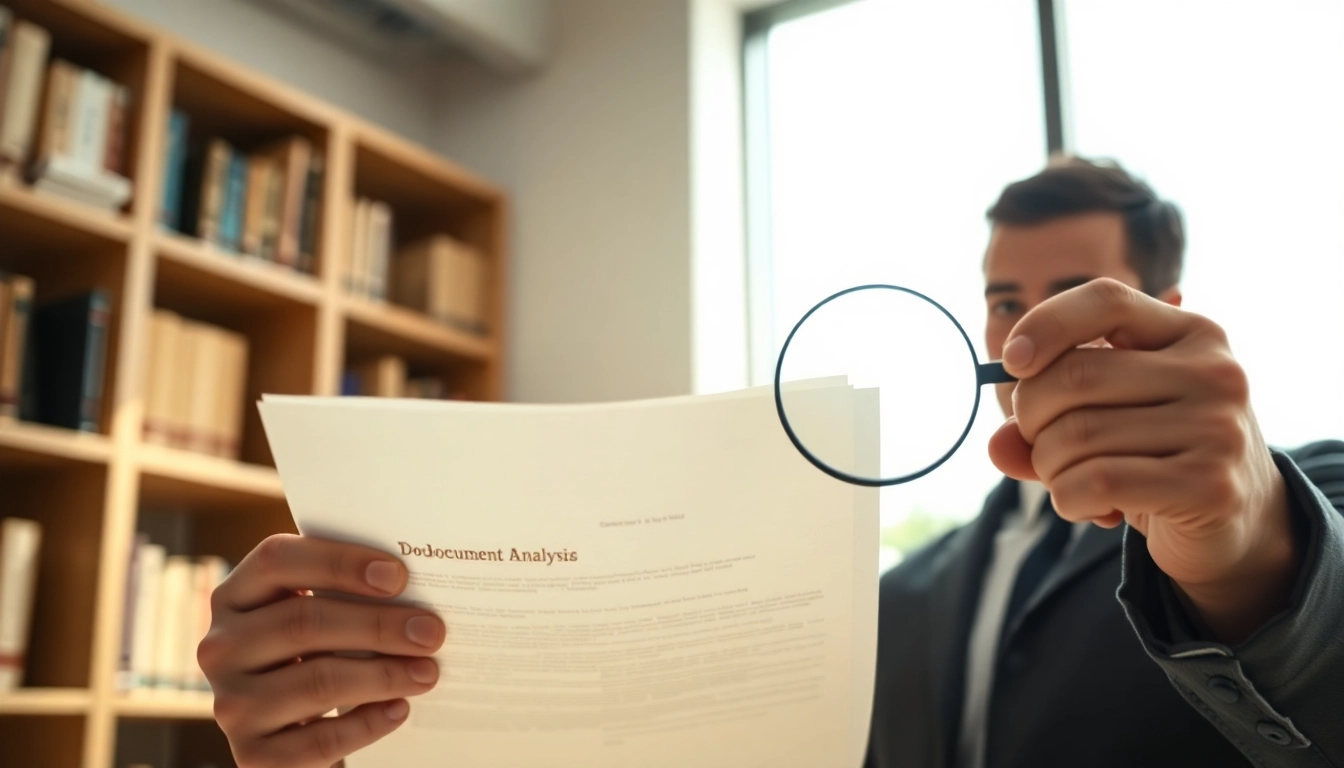Understanding Document Authenticity
In our increasingly digital world, the desire to assess the authenticity of documents has become paramount. Whether it’s for personal purposes like verifying an academic achievement, or professional reasons such as ensuring compliance in business transactions, knowing how do I know this document is real is crucial. This article offers a comprehensive guide on identifying real documents by diving deep into techniques for verification, security features, and modern technology aimed at battling fraudulent documentation.
What is Document Authenticity?
Document authenticity refers to the validation of a document’s legitimacy and credibility. An authentic document is one that originates from its purported source, contains accurate information, and manifests established quality standards. Authenticity is governed by various factors, including security features, methods of production, and historical context.
Importance of Valid Documents
Valid documents carry significant weight in legal, financial, and personal realms. From passports that allow entry into different countries, to academic certificates verifying one’s educational accomplishments, the authenticity of these documents is integral. Invalid documents can lead to severe repercussions including identity theft, financial losses, and legal penalties. Thus, being able to discern the real from the fake is not just a necessity, but a protective measure.
Common Types of Documents to Verify
When it comes to verifying documents, certain types are more susceptible to fraud than others. Common documents that require verification include:
- Passports and identification cards
- Academic degrees and transcripts
- Financial documents such as bank statements
- Legal contracts and agreements
- Medical records
Each of these types can pose unique challenges for verification, emphasizing the necessity of an informed approach to document review.
Visual Inspection Techniques
Before diving into technological solutions, it’s essential to master basic visual inspection techniques. A thorough visual check can often reveal signs of tampering or forgery.
Identifying Security Features
Many documents contain built-in security features intended to prevent forgery. Some common security features to look for include:
- Watermarks: Genuine documents may include watermarks that are visible when held up to light.
- Holograms: High-quality holographic images can often serve as an indicator of authenticity.
- Microprinting: This is a printing technology used for creating small text which is difficult to replicate.
- Invisible ink: Many high-security documents contain information that can only be seen under specific lighting.
Familiarizing oneself with these features increases the chances of correctly identifying a genuine document.
Analyzing Paper Quality
The quality of the paper used can also be an important indicator of a document’s authenticity. Authentic documents are typically printed on high-grade paper, which has a specific texture and weight. Additionally, examining the edges and corners of the document can reveal whether it has been cut or altered.
Checking Ink Types and Printing Methods
Documents may also differ in the types of ink and printing methods used. Most authentic documents are printed using advanced printing techniques, like offset or digital printing, which create an even distribution of ink and sharp images. In contrast, counterfeit documents may show discrepancies in color alignment, smudges, or inconsistent ink saturation.
Utilizing Technology for Verification
In a rapidly digitizing world, advanced technologies have emerged to assist in document verification. These tools enhance traditional verification methods through innovative solutions.
Using Digital Tools to Confirm Authenticity
Digital tools, such as online verification databases and mobile apps, can aid in confirming the authenticity of documents. For instance, certain educational institutions maintain databases where you can verify the credentials of degree holders, while government bodies often have online systems to verify identification documents. Utilizing these resources can streamline the verification process significantly.
AI-Powered Document Review Tools
Artificial Intelligence is progressively becoming a powerful ally in verifying document authenticity. AI-powered tools are capable of analyzing vast amounts of data and patterns to identify potential forgeries. For instance, tools that analyze digital signatures or those that utilize machine learning algorithms to detect red flags can enhance the accuracy of authenticity validation.
Scanning and Analyzing Metadata
When dealing with digital documents, metadata can provide valuable insights into the document’s authenticity. Metadata includes information about when and how a document was created, modified, and accessed. This information can often reveal inconsistencies that may suggest tampering. Familiarity with how to access and interpret metadata can, therefore, be an invaluable asset in document verification.
Common Red Flags of Fake Documents
Effective verification involves recognizing the signs that indicate a document may be fraudulent. Certain red flags can serve as indicators of possible forgery.
Inconsistent Information Review
Cross-referencing information is essential in verifying authenticity. Look for inconsistencies in data such as names, dates, and locations. For instance, if a bank statement lists a transaction that occurs on a public holiday when the bank was closed, this is a potential red flag.
Unusual Formatting and Errors
Stilted formatting, misaligned text, or spelling and grammatical mistakes often signal a counterfeit document. Genuine documents usually maintain a consistent formatting style inherent to their respective issuing authority. Careful scrutiny can often reveal these discrepancies.
Suspect Source Verification
Documents that come from questionable sources or those that lack a proper chain of custody are inherently suspect. Effective verification often includes confirming the source of the document and whether it has a track record of issuing legitimate documents.
Best Practices for Document Verification
Integrating robust document verification practices into your routine is essential for safeguarding against fraud and ensuring the integrity of the information you rely on.
Steps for Manual Review
Conducting a manual review of a document involves a systematic approach. Begin by gathering relevant background information regarding the document type and source. Follow this with a thorough check of security features, paper quality, and any corroborating details. Keep a checklist to ensure thoroughness in your review.
Establishing a Verification Protocol
Creating a standard operating procedure for document verification can streamline the process and ensure consistency. This protocol should detail the specific steps to be taken for each document type, designating responsible individuals and timelines for verification. This systematization helps in identifying fraud more systematically across the board.
Resources for Ongoing Education
Staying informed on the latest forgery tactics and verification methods is crucial in this ever-evolving landscape. Educational resources, workshops, and forums can provide continuous learning opportunities. Encouraging ongoing training within organizations can ensure that employees are equipped to identify the latest tactics in document fraud.


